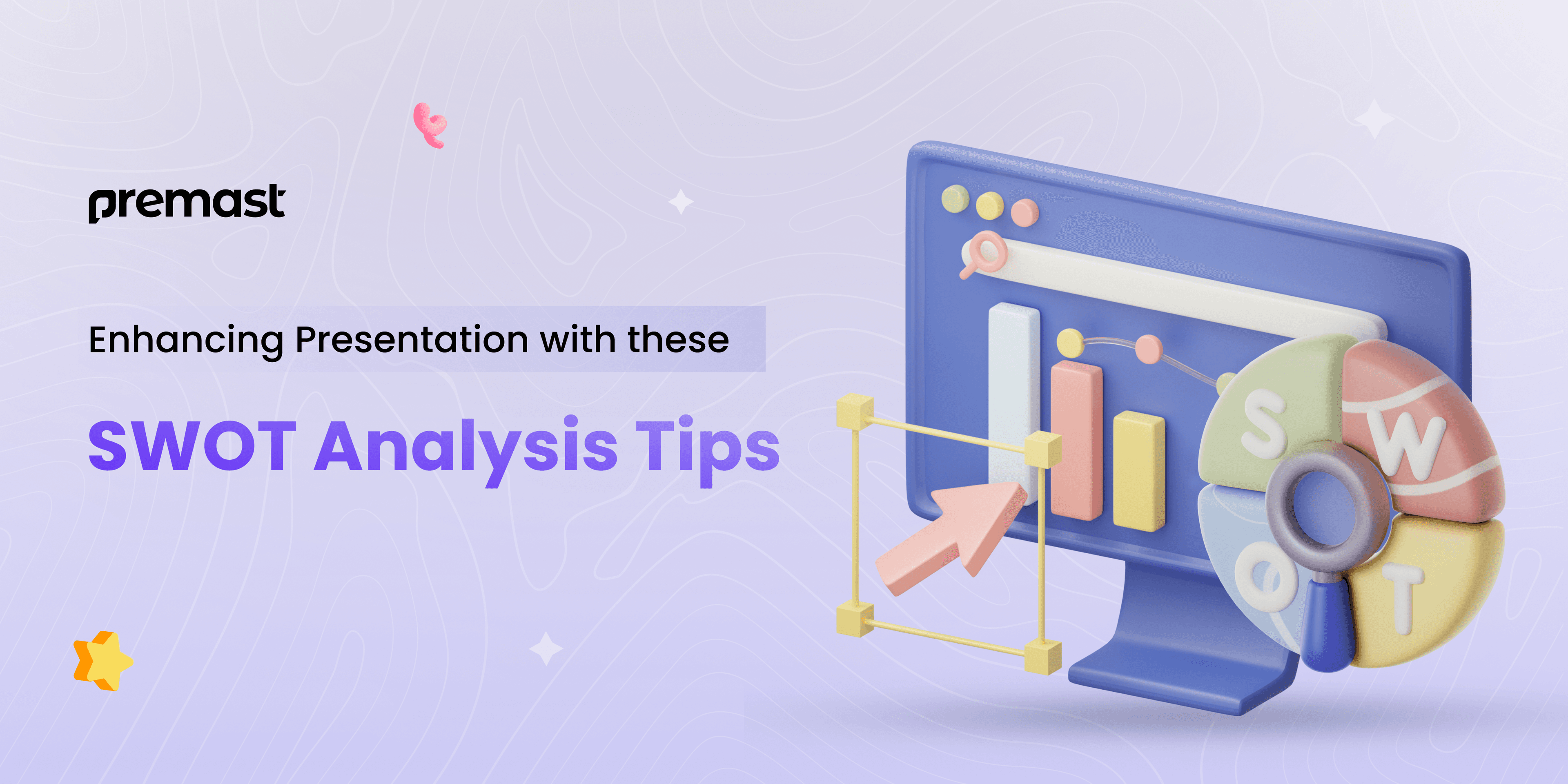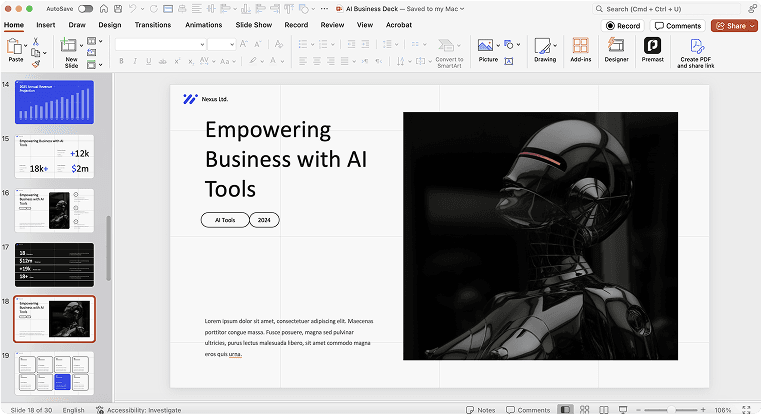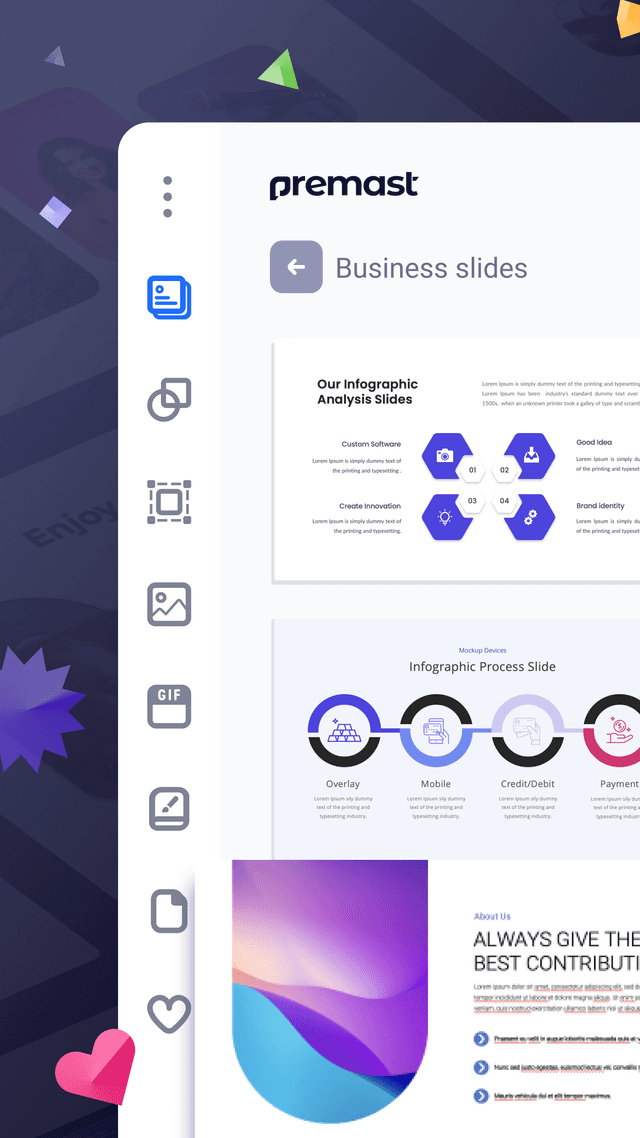
Swot Analysis Tips For Enhancing your Presentation.
It’s really important to include a SWOT analysis in presentations. This helps small businesses understand their market and learn more about their big competitors. For entrepreneurs, knowing their company and the industry’s needs is vital. That’s why they should look at their business’s strengths, weaknesses, opportunities, and threats. The SWOT analysis helps them turn problems into advantages.
In the realm of entrepreneurship, business owners face the imperative of conducting a comprehensive assessment of their company’s attributes and the demands of their specific industry.
Thus, they require a platform to scrutinize the strengths, weaknesses, opportunities, and threats inherent in their business operations. At the core of this analytical process lies the SWOT analysis, a pivotal instrument capable of transforming imperfections into advantageous opportunities.
What are the components of SWOT Analysis?
SWOT analysis lies in its ability to systematically uncover a business’s strengths and weaknesses. By doing so, SWOT enables the transformation of these internal aspects into opportunities while also guarding against external threats. Thus, the primary objectives of a SWOT analysis include identifying and distributing significant factors that could adversely affect any of the four categories, setting a direction, and conducting a comprehensive examination of a specific business.
This is precisely why SWOT analysis should be integrated into the business presentation. Incorporating a SWOT framework into presentations allows for the evaluation of a company’s performance within the broader context of factors influencing its success, thereby segmenting its value as follows:
– Strengths.
This section will help figure out what the business is good at—like its superpowers. It’s like finding its special skills. And it will decide which of these skills to show off to the people the business wants to reach.
Questions to consider:
- What has your company done well?
- And what does your company know a lot about in today’s business world?
Key Factors:
Your strengths may lie in your entrepreneurial acumen, extensive client base, competitive pricing, diverse product range, or unwavering commitment to quality assurance.
-Weaknesses.
This element is designed to pinpoint areas where the business can improve, encompassing internal challenges that the business must address.
Questions to consider:
- What areas do you need to work on for improvement?
- What types of resources are you currently lacking?
Key Factors:
The company may face challenges such as inadequate supply channels, absence of effective management, limited expertise, innovation shortcomings, and unfavorable physical location.
-Opportunities.
Exploring the strengths of a business can provide valuable insights into areas ripe for profit optimization. Likewise, addressing weaknesses can not only mitigate risks but also unveil potential opportunities for growth and innovation.
Questions to consider:
- Are there any new market trends we can look into?
- Are there any new groups of people we could try to reach?
Key Factors:
Possibilities may encompass market expansion, technological advancements, lifestyle shifts, social trends, and more.
-Threats.
This is about how things in the environment can hurt a business. Threats can pop up suddenly, so it’s important to spot them.
Questions to consider:
- Do you have any other companies that might compete with you?
- Are there any new trends in the market that could be a problem?
Key Factors:
Possible risks include shifts in what customers prefer, changes in prices due to competition, uncertain economic conditions or rising prices, financial difficulties, increased government regulations, and various other potential challenges.
What makes SWOT Analysis such a crucial tool for Businesses?
Swot Analysis can help a business to identify problems from any factors.
Here’s why we believe it’s crucial:
- SWOT analysis sheds light on the overall health of your business.
- It identifies internal and external factors that could affect its success or failure.
- It helps anticipate threats from competitors.
- By thoroughly assessing your business environment, it informs future actions.
- For newcomers, incorporating SWOT analysis into their strategy is highly recommended.
In business planning, there’s no one-size-fits-all approach. Viewing new ventures through the lens of SWOT analysis can steer you in a positive direction and spare you from potential headaches down the road.
How can you craft a remarkable SWOT Analysis layout?
Creating an outstanding SWOT analysis design involves a combination of creativity, clarity, and effectiveness in conveying information. Here are some tips to help you design an exceptional SWOT analysis:
- Clear and Visually Appealing Layout: Start by organizing your SWOT analysis into four quadrants: Strengths, Weaknesses, Opportunities, and Threats. Ensure that each quadrant is clearly labeled and visually distinct from the others. You can use different colors, shapes, or shading to differentiate between them.
- Use Visual Elements: Incorporate visual elements such as icons, symbols, or images to represent each aspect of the SWOT analysis. For example, use a thumbs-up icon for strengths, a thumbs-down icon for weaknesses, a lightbulb for opportunities, and a warning sign for threats. These visual cues make it easier for viewers to quickly grasp the content.
- Prioritize Information: Highlight the most important points in each quadrant to draw attention to key insights. You can use larger font sizes, bold text, or different colors to emphasize critical elements. Make sure to prioritize information based on its relevance and significance to the analysis.
- Keep it Concise: Avoid overcrowding your SWOT analysis with too much information. Focus on highlighting the most relevant strengths, weaknesses, opportunities, and threats facing your subject. Use bullet points or short phrases to convey key points concisely.
- Provide Context: Offer brief explanations or examples to provide context for each point in the SWOT analysis. This helps viewers understand why each factor is considered a strength, weakness, opportunity, or threat, and how it may impact the subject of the analysis.
- Balance: Maintain a balance between the four quadrants of the SWOT analysis. While it’s essential to identify and address weaknesses and threats, also emphasizes strengths and opportunities to showcase potential areas for growth and improvement.
- Customize to Audience: Tailor your SWOT analysis design to your audience’s preferences and needs. Consider factors such as their level of expertise, familiarity with the subject matter, and visual preferences when designing your SWOT analysis.
- Use Professional Tools: Utilize graphic design software or online tools to create polished and professional-looking SWOT analysis designs. Programs like Microsoft PowerPoint, Adobe Illustrator, or Canva offer templates and design features that can help you create visually appealing SWOT analyses.
By following these tips, you can create an outstanding SWOT analysis design that effectively communicates key insights and engages your audience.
Conclusion:
The SWOT Analysis stands out as the foremost tool for dissecting a company’s position within the present business landscape. It serves as a vital aid in pinpointing strengths, mitigating weaknesses, uncovering opportunities, and mitigating potential threats. Precision is key in application, aiming for measurability and rationality in your assessments.
Let’s visit Premast to download free PowerPoint templates. You can also visit Premast Blog to keep up-to-date with new templates and get design tips from our PowerPoint experts!
Spread the word
Start for free.
Design, manage and share your Presentation and branded content







